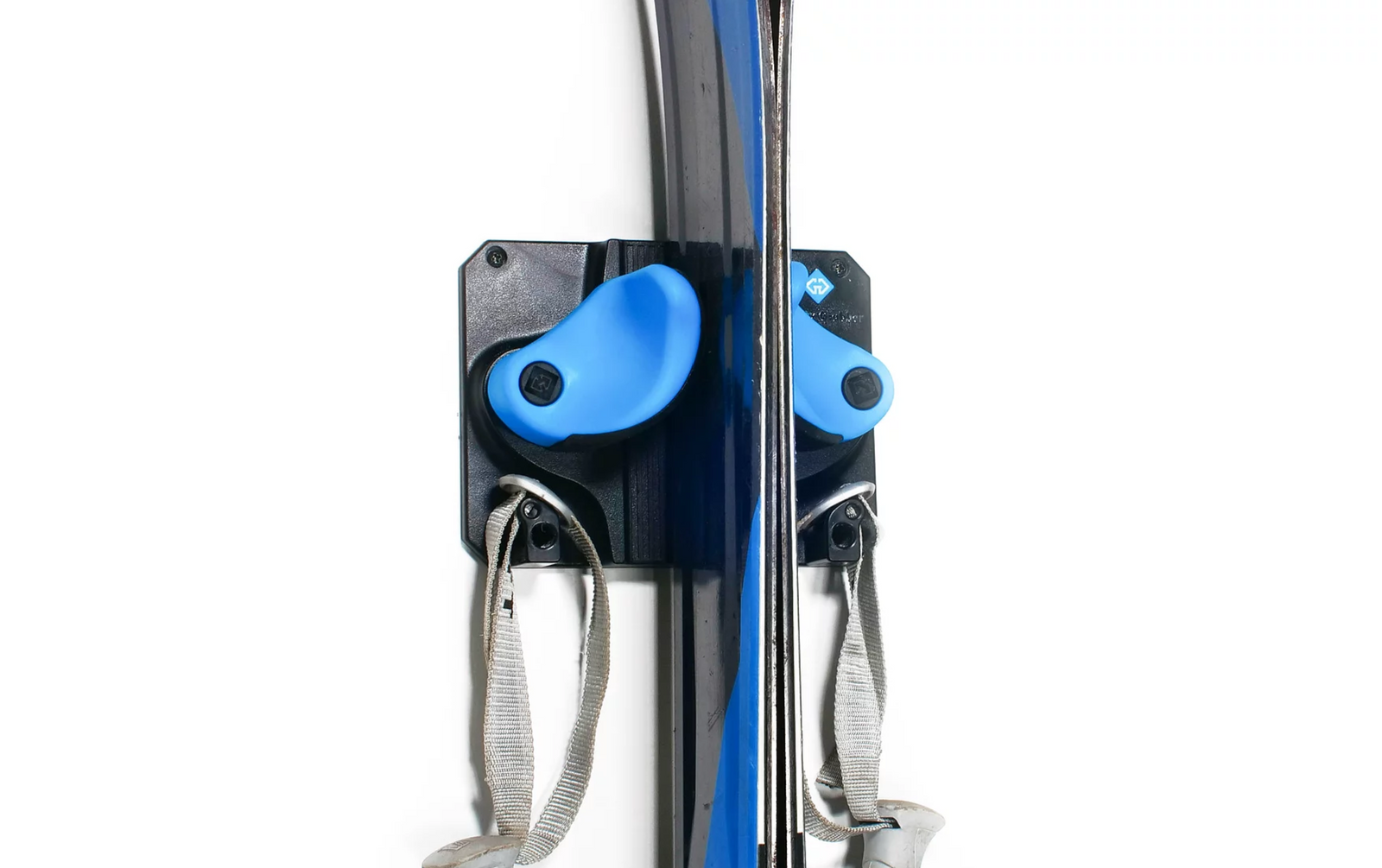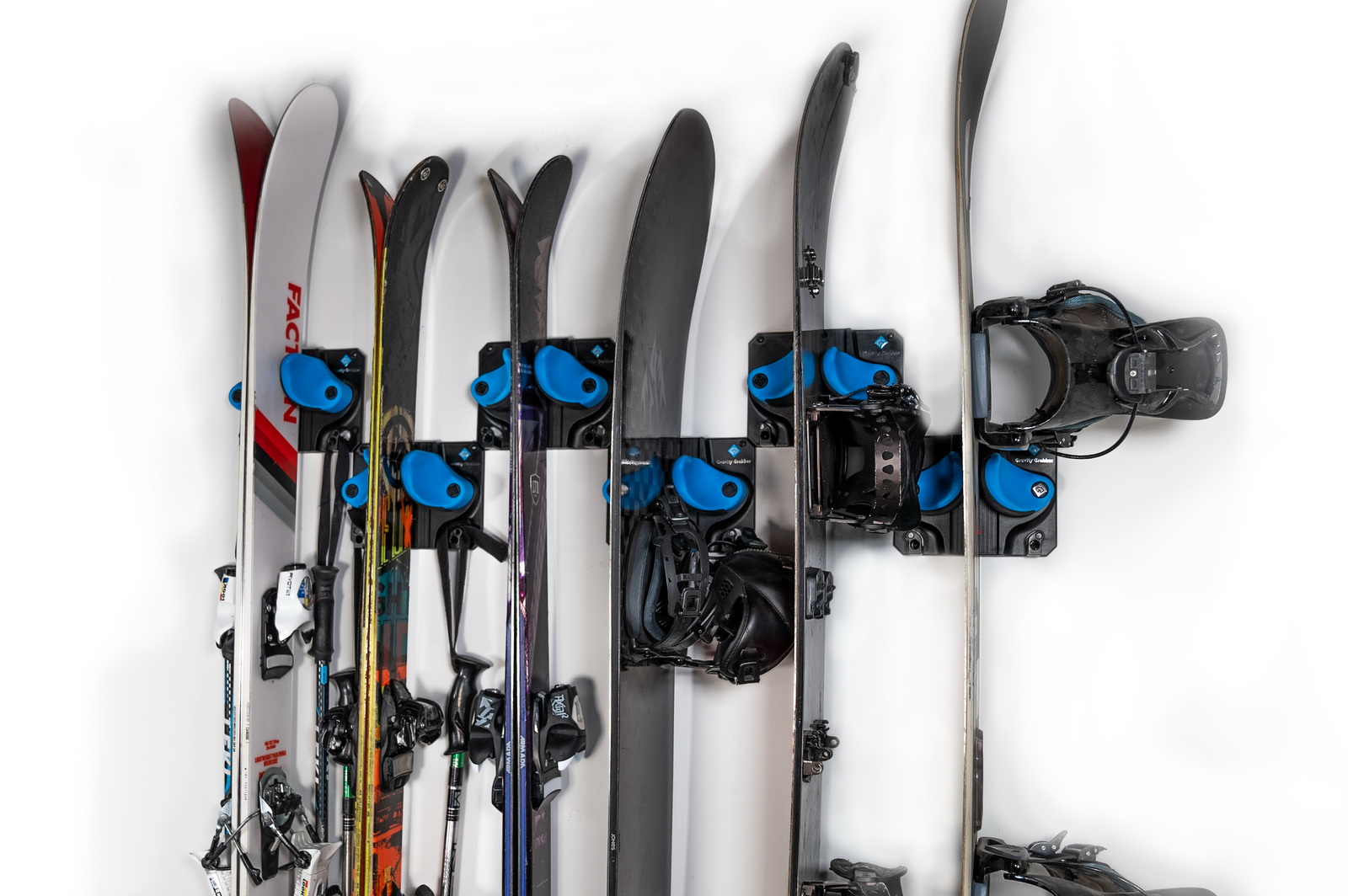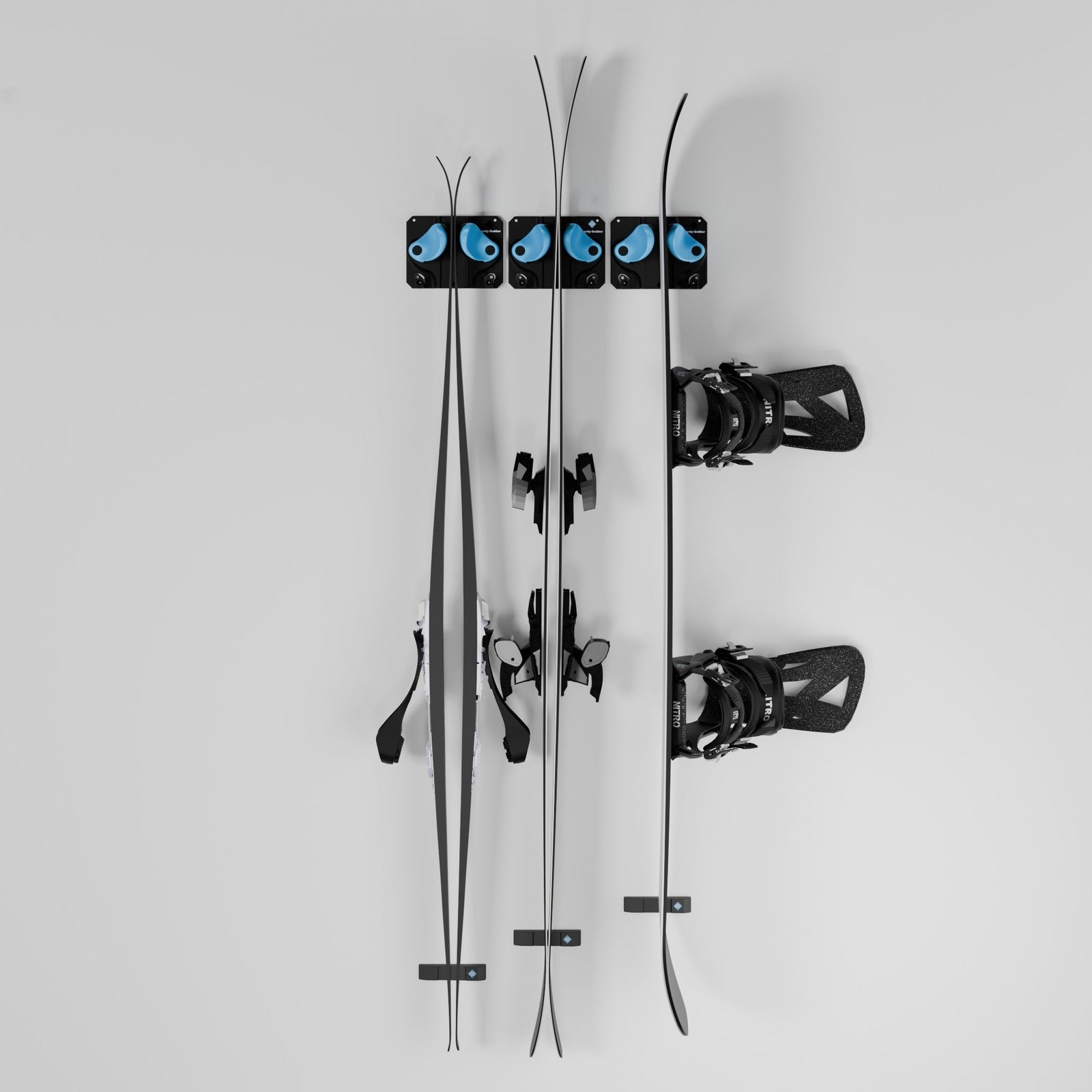Why Ski Rust Happens
Rust on ski edges is more than cosmetic. Once corrosion sets in, it eats into the metal, dulls the sharpness, and leaves you with skis that struggle to grip icy terrain. The main cause? Moisture that isn’t properly dealt with after skiing.
Here’s where it sneaks in:
-
Snowmelt: Skis tossed in a car or garage with snow still clinging to them.
-
Humidity: Damp garages or basements accelerate corrosion.
-
Condensation: Storing skis flat on cold floors can trap moisture against edges.
-
Improper Storage: Leaning skis in corners allows water to drip down and pool at the base.
The result: orange-brown streaks that can appear in as little as 24 hours after use.
Why Preventing Rust Is Essential
A rusty edge isn’t just an eyesore—it’s a performance killer.
-
Dull Edges: Rust breaks down sharpness, making it harder to grip on hardpack.
-
Weakened Structure: Pitting from corrosion reduces edge durability.
-
Costly Fixes: Professional tuning can repair mild rust, but repeated damage shortens the life of your skis.
Preventing rust means more than saving money—it ensures your skis are ready when conditions demand precision.
Best Practices to Prevent Ski Rust
1. Always Dry Skis After Use
The most important step: wipe skis completely dry with a cloth after skiing. Don’t forget to dry the edges, especially around the bindings where snow packs in.
2. Store Skis Off the Ground
Concrete floors are notorious for holding moisture. Elevating skis keeps them away from condensation and puddles.
3. Choose a Dry, Ventilated Space
Avoid humid basements or unsealed sheds. A cool, dry garage or gear room is ideal.
4. Don’t Leave Skis in a Bag
Ski bags are great for travel, but they trap moisture. If you use one, unzip it immediately once home to let air circulate.
5. Wax Before Summer Storage
A thick coat of wax (without scraping) seals the base and edges during the off-season, protecting them from rust and oxidation.
6. Use Proper Storage Systems
Keeping skis vertical, separated, and elevated ensures air circulation and avoids trapped moisture—key to rust prevention.
Why Storage Systems Matter for Rust Prevention
Even the best post-ski wipe-down doesn’t help if skis are stored poorly afterward. Laying them flat or leaning them in damp corners creates perfect conditions for rust. That’s why ski storage systems are more than a convenience—they’re protection.
A good system should:
-
Keep skis elevated and away from moisture.
-
Allow air to circulate freely around edges.
-
Prevent skis from rubbing against each other.
-
Make it easy to grab and put them back (because complicated storage often gets skipped).
How Gravity Grabber Helps Prevent Ski Rust
The Gravity Grabber solves the moisture problem directly:
-
Elevated Storage: Skis hang vertically, never resting on damp floors.
-
Protective Grip: Padded arms hold skis without scratching or trapping water.
-
Air Circulation: Vertical spacing lets skis dry naturally between uses.
-
Quick Access: Simple in-and-out design means you’ll actually use it every time.
It’s not just about neatness—it’s about building better ski-care habits automatically. With the Gravity Grabber, preventing rust doesn’t require extra thought.
Off-Season Rust Protection
Rust prevention isn’t just for mid-season. During the off-season, skis are especially vulnerable since they sit for months untouched. Before summer:
-
Clean and dry thoroughly.
-
Apply a protective wax coat.
-
Store in a cool, dry place using a rack system.
This way, when winter comes around again, you’re not scraping rust off before your first run.
Protect Edges, Protect Performance
Rust may be small, but it wrecks performance faster than almost anything else. The key to prevention is simple: dry skis, elevate them, and keep them stored properly.
Whether you’re a weekend warrior or a dedicated powder chaser, investing in habits—and tools like the Gravity Grabber—ensures your skis stay sharp, strong, and ready for every turn.
Because the best ski days start long before you hit the chairlift—they start with how you care for your gear at home.




